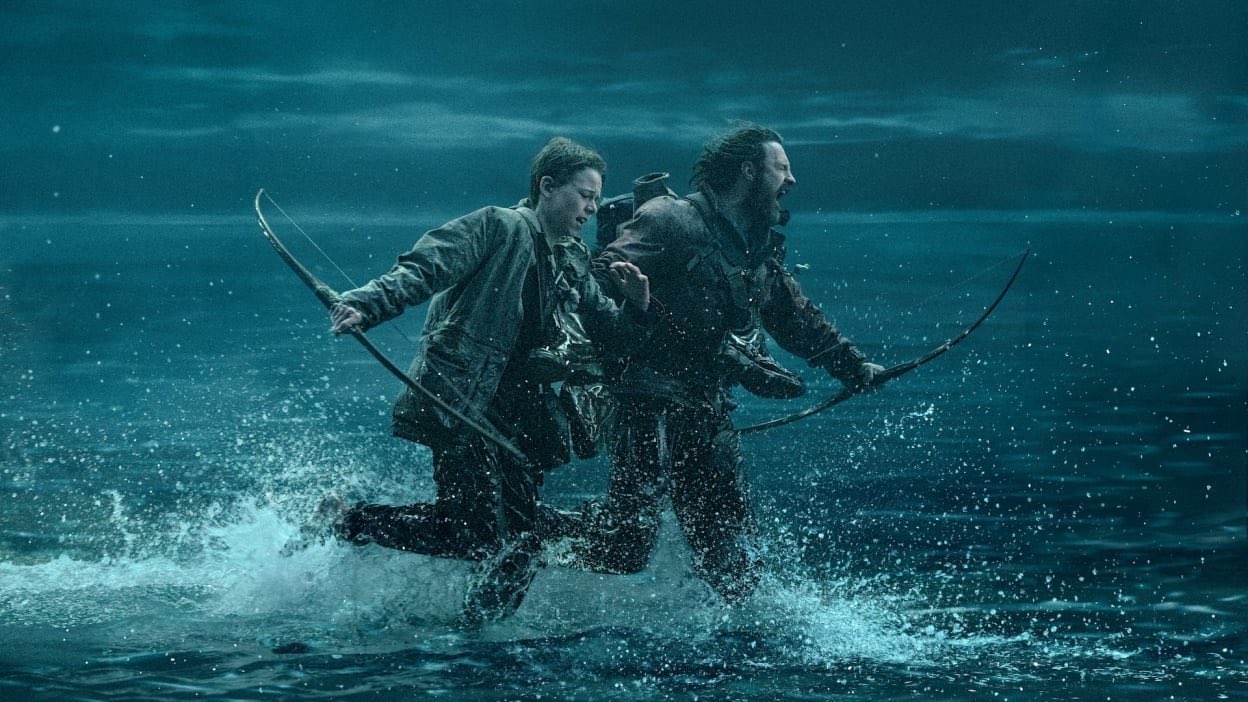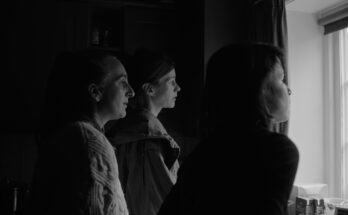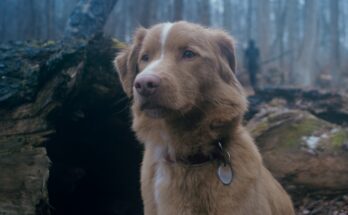Want to hear more from the actors and creators of your favorite shows and films? Subscribe to The Cinema Spot on YouTube for all of our upcoming interviews!
28 Years Later marks the reunion of director Danny Boyle (Trainspotting, Slumdog Millionaire) and screenwriter Alex Garland (Dredd, Ex Machina, Annihilation, Civil War, Warfare). This pair previously collaborated on The Beach, Sunshine, and 28 Days Later. 28 Years Later serves as a sequel to the latter and returns to see what has happened to the United Kingdom in the twenty-eight years since the initial outbreak of the Rage virus.
In those twenty-eight years, society has found ways to cling on. Particularly, Boyle and Garland’s film focuses on Spike (Alfie Williams), his father Jamie (Aaron Taylor-Johnson), and his mother Isla (Jodie Comer). They live on a small coastal island connected to mainland England via a tidal causeway. The film focuses on Spike’s first time leaving the island and the aftermath of that trip.
The Beauty of 28 Years Later
Right from the start, 28 Years Later has a stunning visual look. Shot entirely on the iPhone 15 Pro Max (albeit with various accessories), the project looks better than the vast majority of blockbusters released today. Boyle and cinematographer Anthony Dod Mantle craft some gorgeous frames. They also create some truly inventive and creative action sequences that seem only possible through the use of multiple phones. Beyond that, even, there is a vibrancy to all the colors. It feels like a stark rejection of the idea of what Hollywood films typically are.
The film isn’t merely visually stunning, either. Thanks to the help of casting directors Rebecca Farhall and Gail Stevens, the performances are gorgeous and stunning too. Newcomer Williams is a revelation. It’s always a risk to have a film rely on a child performer, but Williams nails it. Boyle seemingly has a gift for coaxing great performances out of child actors. As for his co-stars, this is one of Aaron Taylor-Johnson’s best performances to date. He really captures this essence of toxic masculinity but also genuinely wanting the best for his son. It’s a fine line to walk, but it plays to Johnson’s strengths perfectly.
Comer is another bright spot. Her role as Isla is a tough one due to the character’s mental health. It’s a role that can easily be overplayed, and at times, Comer almost overdoes it. However, she always lands on the right side of the line. With a single look in the film’s climax, she’s able to move audiences to tears. It’s rare to see a major studio picture this perfectly cast.

Brexit and Horror
As an American, I’m not totally qualified to speak on this matter, but the film is clearly a meditation on a post-Brexit Britain. The country has been left behind by the rest of the world, and as such, it has begun to culturally and technologically decay. What little of the outside we do get shows that the rest of the world views them as a problem and, quite frankly, a regressive society. Those left in the country hang out with what few cultural identifiers they have, like portraits of the Queen. It’s a reflection that cultural isolation and nationalism ultimately lead to cultural stagnation and decline. It’s a scary look at a potential future for Britain but also a take on something that is already in progress.
Beyond that, though, the horror elements in 28 Years Later are fantastic. The original film revitalized the zombie genre with its introduction of fast zombies, and this current film further innovates with the introduction of Alpha zombies. They are, for all intents and purposes, fast zombies on steroids; they are bigger, faster, meaner, and smarter. From their introduction in the film, they are clearly something to be reckoned with. The film reinforces that with a chase sequence that needs to be seen to be believed, and one that a lesser film would make its climax. After that, the Alphas’ presence is always felt through the film. They could appear at any moment and take anyone out. This sense of danger and unease feeds into perhaps the film’s biggest theme.
Everything dies.
Perhaps the most surprising aspect of 28 Years Later is how emotionally poignant it is. Most of this emotional catharsis comes to a head in the third act once Ralph Fiennes’s character, Dr. Ian Kelson, is properly introduced. Once this happens, the film takes a break from the high-intensity zombie horror and allows both the audience and the characters to process the true trauma and death of it all. Also, Kelson offers a chance to confront this death head-on and offers the audience an alternative perspective on it all. Yes, death is scary, but it’s also an inevitable part of life, and that inevitably is what makes it beautiful in its own strange way. It’s not something to run from or avoid, but just another fact of life.
For once, both Spike and the audience are actually given the chance to take it all in. Not just running from death back to life, but to sit in it, mourn, and learn from it. Furthermore, if one spends all of life running from death, then they never get the chance to fully experience, live, and love in life. And that’s what truly makes life special.
Fiennes gives Kelson such a gentle touch insofar as you can’t help but listen to him. He becomes the film’s emotional anchor. And everything with his character is just pitch perfect. This leads to the climax of the film, which is the most beautiful thing put to film this year. The score from Young Fathers perfectly enhances the emotion of Boyle and Mantle’s imagery. It’s a beautiful encapsulation of grief and one that makes the film so much more than just a standard horror film.
The Verdict on 28 Years Later
28 Years Later is a perfect zombie film with its rich, layered social commentary on Brexit, the Coronavirus (COVID) pandemic, and the nature of death. It offers audiences thrills but plenty of deeper material to chew on. In many ways, Boyle and Garland are continuing the legacy of the late George A. Romero and his zombie films. If you’re a fan of horror or just cinema in general, then you owe it to yourself to watch 28 Years Later on the biggest screen possible.
Score: 5/5
Be sure to check back with The Cinema Spot for more horror film reviews! And check out our Facebook, Twitter, Instagram, Bluesky, and Letterboxd pages!
Sometimes I write things, but mostly I watch movies.



